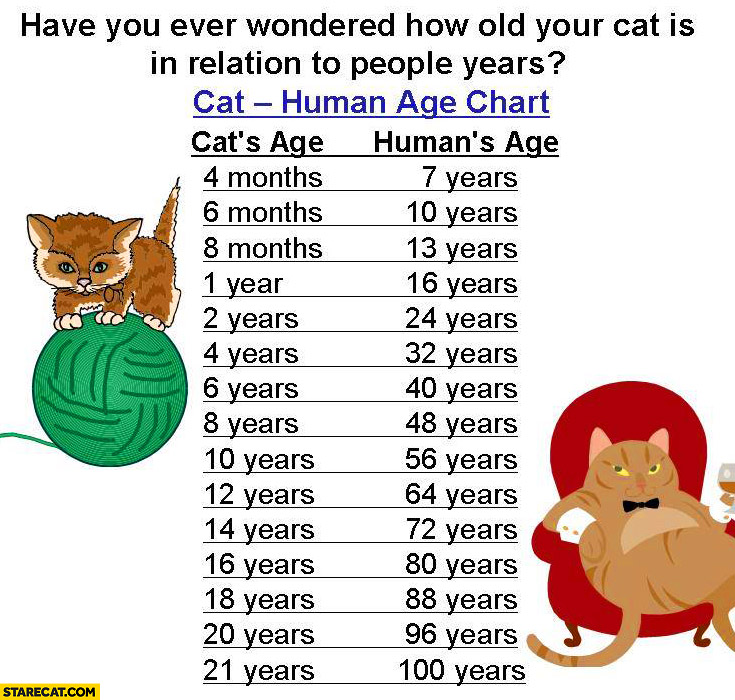

The larger the dog, the more rapid is its growth. The best explanation, to date, lies within the rapid growth of dogs during the first year of their life. The reason why smaller breeds live longer has not been elucidated yet. No need to say this is a challenge for biologists who see their theories undermined. There is a direct and proven negative correlation between weight and longevity.
ANIMAL AGE TO HUMAN AGE FREE
Scientists explain that the metabolism of small mammalian species is more active and generates more free radicals that are toxic to the organism.Īnother theory proposes that mammalian species that experience high mortality rates (they are generally small and have a lot of predators) developed their survival strategy upon early sexual maturity and fertile reproduction rather than on anti-aging mechanisms.īut inside the canine species, it is exactly the contrary: the smaller the breed, the longer it lives. In the sea, Bowhead Whales are reported to live for 200 years. For instance, elephants can live more than 80 years. But, aren't human beings able to prolong their life expectancy more than the rest of the mammal population on earth?ĭogs' weight ranges from a factor 1 to more than 80 and the lifespan from a factor 1 to 4.Īmong biologists there is a general agreement that the bigger a mammal species, the longer it can live. Later on, dogs' growth, compared to humans', slows down and follows a linear pattern, at a rhythm of approximatively 5 years of human life for 1 year of dog life.Īt the end of life, the aging process seems to accelerate again in dogs. We should rather say that it is more the growth of young humans that is slower than the growth of puppies rapid, as compared to other mammals, domestic or in the wild. In fact, young puppies develop much faster than human children, especially during the few weeks following their birth. They found that dogs' growth is not parallel to humans'. To assess a dog's age more precisely in terms of human years, scientists use markers of physiological development such as puberty, adulthood, old age, and maximum lifespan. But, well, this is the average, for all dogs, whatever their age. Of course this is not really accurate, because there are many other factors to take into account. The quickest way is simply to multiply the

One way to get an estimate of how old your dog is is to try to convert its age in human years that you are more familiar with. That is what we are going to explain in this post. Size, behavior, and susceptibility to diseases may vary a lot from one breed to another. He doesn’t develop attitudes that could lead to traumas, especially car accidentsĮverything should be fine until, again, you may get surprised by new disorders and symptoms that occur because your dog is aging more rapidly than you expected and sometimes, much more rapidly.ĭog is a heterogeneous species. He doesn’t develop psychological disorders He receives proper anti-parasitic treatments and routine vaccinations Of course, you still need to provide good care and make sure that: Things get easier when your dog becomes an adult. You may get very upset if you discover your little beloved female puppy is pregnant and you didn’t even notice she was already pubescent. The young dog's behavior changes quite dramatically. Puberty also occurs quite early: 6 months on average. It is almost impossible to cure later on. This is a condition that occurs when a puppy is taken away from his mother too early, before 6 weeks after birth. Not too late, and especially not early so that they will not suffer from a separation anxiety disorder. They have to be vaccinated and wormed very early from 4 weeks of age.

When they are very young, puppies need special care. The speed at which your dog is developing may well surprise you! You know that dogs don’t grow and age at the same pace as humans.


 0 kommentar(er)
0 kommentar(er)
